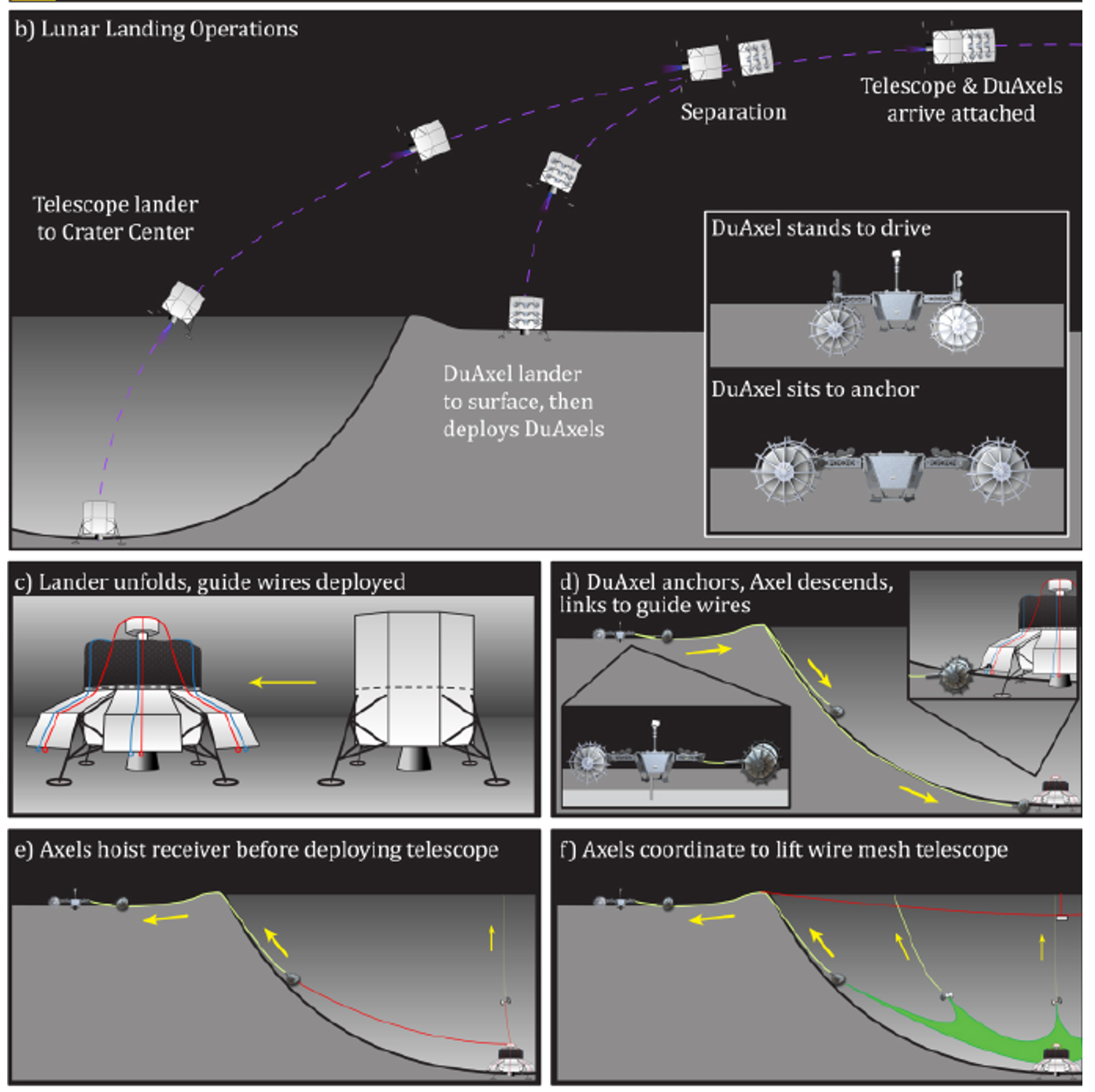To better listen to the universe, US space agency Nasa plans to build a 1km-diameter ultra-long-wave radio telescope in a crater on the Moon’s dark side.
According to the proposal, the Lunar Crater Radio Telescope (LCRT) would be built by a robot that would lay a web of wire mesh in a 3.5km-diameter crater on the dark side of the Moon and suspend a receiver in the centre of it.
Nasa has funded planning work on the scheme as part of its Innovative Advanced Concepts programme. The cost of the project would be kept down by carrying out all the work remotely, which means no humans would be required on site.
The robot used would be the DuAxel, which Nasa has been developing at its California Institute for Technology’s Jet Propulsion Laboratory (JPL) specifically to climb crater walls.

How the LCRT would be deployed
Nasa says putting the telescope on the Moon has a number of “tremendous” advantages. For example, it can use wavelengths greater than 10m, which the Earth’s ionosphere reflects away, and the mass of the Moon shields it from radio noise from Earth.
The project is the brainchild of Saptarshi Bandyopadhyay, a robotic technologist at the JPL. He commented: “LCRT could enable tremendous scientific discoveries in the field of cosmology by observing the early universe in the 10-50m wavelength band, which has not been explored by humans to date.”
China’s Chang’e-4 mission has already deployed a small radio telescope on its Queqiao satellite, which began orbiting the Moon in May 2018, but this is tiny compared with the LCRT.
Top image: Nasa’s graphic of the LCRT concept
Further reading:






